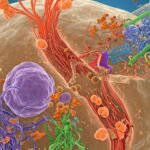Regenerative medicine is transforming how we think about healing. Instead of simply treating symptoms or slowing disease progression, scientists and medical innovators are now exploring how to repair, replace, and regrow damaged tissues and organs at the cellular level. It represents a shift from managing illness to restoring health, and it holds the potential to change how we live, age, and recover.
From stem cell therapy and tissue engineering to gene editing and bio printing, regenerative medicine is moving rapidly from research labs to real-world clinics, giving hope to people living with conditions once considered irreversible. But what does the future truly hold?
What Makes Regenerative Medicine So Revolutionary?
Traditional medicine focuses mainly on managing disease symptoms. Regenerative medicine goes a step further by aiming to restore normal function. It uses the body’s own healing mechanisms or medically engineered substitutes to rebuild what has been lost due to injury, illness, or age.
At the heart of this movement are stem cells, which are the body’s master cells and have the extraordinary ability to transform into specialized cell types such as bone, nerve, cartilage, or muscle. This makes them powerful tools for repairing tissues that the body struggles to heal on its own.
Institutions like a Panama stem cell institute are at the forefront of exploring how stem cell therapy can help support long-term recovery for conditions such as autoimmune disorders, degenerative diseases, and complex injuries.
Key Areas Shaping the Future of Regenerative Medicine
The next generation of regenerative medicine won’t be shaped by a single innovation, but by the convergence of multiple scientific advancements:
1. Advanced Stem Cell Therapies
Stem cells are being used to support healing in conditions such as osteoarthritis, spinal injuries, chronic pain syndromes, and inflammatory disorders. Researchers are refining the types of cells used, the methods of delivery, and their ability to integrate safely and effectively into the body.
The focus is shifting from treatment to restoration, whether it’s regenerating cartilage, repairing damaged nerve tissue, or restoring function in organs such as the heart, liver, or pancreas.
2. Tissue Engineering and Bio Printing
Imagine printing a human organ using your own cells. Bio printing is bringing this idea closer to reality. Scientists are using 3D printers and biological materials to build skin, cartilage, and even early models of organ structures. These engineered tissues can be used for transplants, research, and drug testing without the ethical and biological limitations of donor organs.
3. Gene Editing for Repair and Prevention
Technologies like CRISPR allow scientists to precisely modify DNA. In the future, these tools could be used not only to treat disease, but to prevent it by correcting faulty genes before damage occurs. Paired with stem cell therapy, gene editing could create personalized regenerative solutions tailored to each individual’s biology.
4. Personalized Regenerative Medicine
As research deepens, personalized treatment plans will replace one-size-fits-all approaches. The future of regenerative medicine lies in tailoring therapies using an individual’s own cells, DNA, and immune profile. This could improve effectiveness while reducing the risk of rejection or complications.
5. Ethical and Safety Frameworks
As regenerative therapies evolve, so do ethical responsibilities. The focus is on ensuring treatments are safe, scientifically validated, and ethically sound. This includes oversight for clinical trials, protection of patient rights, and transparency in how therapies are developed and administered.
What Conditions Could Regenerative Medicine Transform?
While regenerative medicine continues to develop, several areas already show promise:
- Neurological conditions such as Parkinson’s, stroke complications and spinal cord injuries
- Joint and cartilage degeneration, including arthritis and sports injuries
- Autoimmune and inflammatory diseases
- Heart damage following cardiac events
- Skin and tissue healing for burns or severe injuries
What was once irreversible may soon become treatable.
Challenges and Opportunities Ahead
The potential is immense, but challenges remain. Long-term safety, accessibility, affordability, and manufacturing standards all require continued attention. Scientists are optimistic, but careful progress is essential to prevent misuse and ensure regulated, evidence-driven advancement.
At the same time, collaboration among research centers, ethical medical providers, and biotechnology companies is accelerating progress. As knowledge grows, regenerative medicine is becoming less experimental and more integrated into conventional healthcare.
A Glimpse Into the Future
One day, repairing a damaged knee could be as simple as regenerating cartilage rather than replacing joints. Treating neurodegenerative diseases may involve restoring function rather than just slowing decline. Chronic pain could become reversible. Scars may become repairable. Aging itself might one day be treated as a biological process rather than an unavoidable decline.
Regenerative medicine isn’t just reshaping treatments; it’s redefining what’s possible.
Conclusion: Hope, Science, and Healing
The future of regenerative medicine lies at the intersection of biology, technology, and compassion. While much remains to be discovered, the direction is clear: a movement toward healing, not just coping. Toward renewal, not just relief.
As science advances, so does hope. And with centres leading research and offering access to emerging regenerative therapies, that hope is becoming tangible for individuals and families across the world.
Regenerative medicine isn’t just about restoring the body; it’s about restoring possibility









